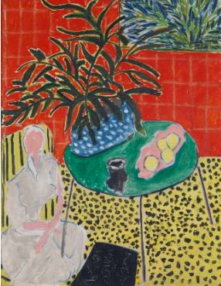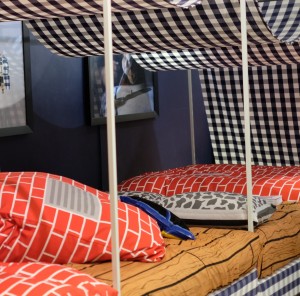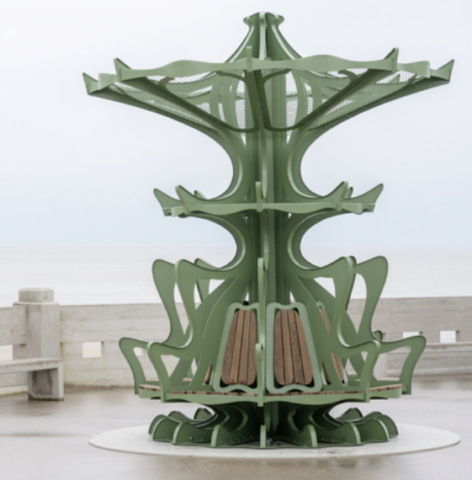Ripped: Artemide Present the Masters’ Pieces Collection at the Italian Consulate during London Design Festival
By Angelina Puschkarski
Lighting specialist Artemide have partnered with the Italian Consulate in Farringdon street during London Design Festival, in an installation presenting the Masters’ Pieces collection. Revisiting iconic design pieces by the Italian lighting company, the Master Pieces collection is an unmissable homage to the pioneers in lighting design. Spanning over 50 years of design history, the collection charts Artemide’s long-lasting collaborations with leading architects including Gio Ponti, Ettore Sottsass, Herzog & de Meuron and Zaha Hadid, just to name a few. The installation will take over the street level windows in the Italian Consulate, showcasing a selection of these iconic designs, which will be illuminated throughout the autumn.
Ernesto Gismondi, founder and president of the Artemide group comments:
‘Since its foundation in 1960, Artemide has been partnering with great architects: it started with Sergio Mazza, Vico Magistretti and Giò Ponti, then continued with Zaha Hadid, Jean Nouvel, Daniel Libeskind, thus demonstrating the companies ability to innovate and offer multiple solutions to satisfy all the lighting needs for everyday living. I met each of them personally, and today we continue to work with outstanding international architects. This continues to be a great privilege for me’.
The Masters’ Pieces collection includes Sergio Mazza’s Alfa (1959); Enzo Mari’s Polluce (1965); Angelo Mangiarotti’s Lesbo (1967); Gio Ponti’s Fato (1969); Livio Castiglioni and Gianfranco Frattini’s Boalum (1970); Vico Magistretti’s Chimera (1969); Ettore Sottsass’ Callimaco and Pausania (1982/3); Gae Aulenti’s Patroclo and Alcinoo (1975); Mario Botta’s Shogun (1986); Santiago Calatrava’s Montjuic (1990); Ado Rossi’s Prometeo (1996); Michelle De Lucchi’s Noto (2008); Herzog & de Meuron’s Pipe (2002); and Zaha Hadid’s Genesy (2009). A selection of lights have been updated with contemporary technology and new finishes.

About Fato: One of the most important Italian architects, Gio Ponti designed the Fato for Artemide in 1969. Recently updated in a new bronze finish. The table or wall lamp is formed of geometrical metal screens creating an opposite dialogue of light and dark, screened and clear, all enclosed in a square frame. Fato is a strong example of 60s design, with a modern, minimalist feel that is still relevant today.
Fato dimensions: length 35cm, width 35cm, height 10cm

Championing the Italian great architects, the Boalum was designed by Gianfranco Frattini and Livio Castiglioni for Artemide in 1970. This groundbreaking product is made from reinforced flexible white plastic, inside which small torpedo lamps are connected to each other and separated by an insulating sphere. Up to four individual sections can be connected to each other to make a length of up to 8 metres, which can be wound in any shape, creating a sculptural effect.
Boalum dimensions: height 200cm, width 6cm

The Patroclo table lamp was designed by Italian architect Gae Aulenti, famous for projects such as the Musee d’Orsay in Paris and the Palazzo Grassi in Venice. In designing the Patroclo for Artemide, Gae Aulenti experimented with an innovative mix of materials: transparent blown glass was used for the core, with a metal framework.
Patroclo dimensions: height 57cm, diameter 35cm





